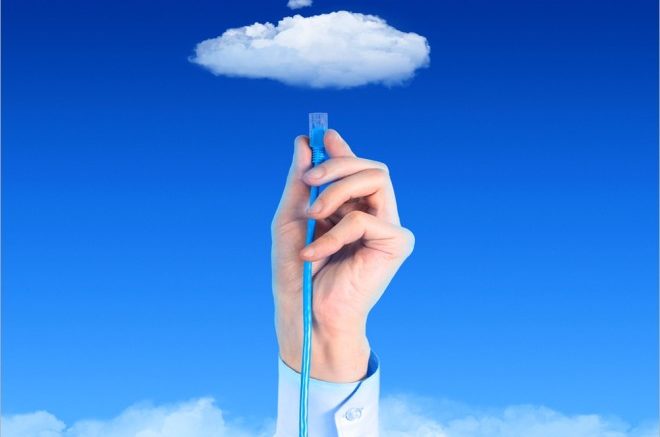Every so often, our tech support department gets a question like this:
All of a sudden my recordings won’t let me skip commercials. Some of them tell me I can’t fast-forward through them, but other recordings let me do it. Why is this?
The answer is generally that the customer searched for, and found, on-demand versions of a program rather than recording it when it aired. This is easy to do with DIRECTV since you’ll find both in the same search. Our advice is simply to look at the channel you’re recording from. If the channel number is greater than 1,000 then that’s an on-demand program. If it’s not, it’s a regular satellite-delivered program.
Matters get stranger when you change over to DIRECTV’s internet television service. You’re getting both “recorded” programs and “on demand” programs through the same internet connection, but there’s still this distinction where if you “record” it, you can generally skip commercials. If you get it “on demand” you can’t.
In order to understand why, you have to understand the distinction that’s made between “cloud DVR” and “on demand” programming. Yes, it’s largely a legal one and not something that really has anything to do with hardware. But it’s still there, and I’ll explain why.
First though, I need to define the terms.
What is cloud DVR?
Cloud DVR service is the way streaming televisions emulate the live TV experience. It’s been around over a decade, but it’s just now beginning to get popular. That’s largely due to faster internet speeds. It just wasn’t possible to do a large-scale cloud DVR service a decade ago.
Cloud DVR replaces your home DVR with a server living somewhere else. If you say you want to record something, a DVR takes care of the job… in some data center somewhere. When you want to play it back, the server sends it to you.
There are several advantages to this method. In general, only one recording is made for everyone in the same area. Sometimes only one recording is made for everyone who uses that data center. This means lower costs since a pay-TV company doesn’t need to stock 25 million homes with DVRs. It also means they can invest in really high quality DVRs. The one in your home is good, but it’s not, like, military spec good.
Cloud DVR service is legal as long as the pay-TV company and the content provider come to fair terms and lately that’s been more common as content providers move away from an “over my dead body” stance to more of a “whatcha gonna do” stance in the way they think about streaming.
With Cloud DVR, you can record anything you can watch, including weird local programs on in the middle of the night in your area. That’s a big plus for this technology compared to on-demand. Speaking of which…
What is on demand?
On demand programming has been around for 20 years on cable and satellite systems. Generally speaking, it’s a similar sort of idea to cloud DVR. There’s one copy of a program and when people want it, a server somewhere delivers it to you. However, there are some differences between on demand and cloud DVR that mean two unique experiences for users.
On-Demand came first. It started out at a time when companies like Disney and Viacom were worried about piracy and about losing revenue to DVRs. So, on-demand programming generally comes with a lot more strings attached in the contract. Much of the time, the average person isn’t allowed to skip ads and the pay-TV company can’t stick in their own ads. Occasionally (and this is less common now) the pay-TV company pays a royalty for each on-demand program viewed.
On-demand is almost always associated with national programs, not local ones, and the typical pay-TV on demand library usually doesn’t have local news or other local programming on it. The only programs from local channels are the ones that air nationally.
On-Demand also sometimes includes programs that never aired at all, like movies and very old programming that’s not available anywhere else from your pay-TV provider.
So wrapping this all up:
- Cloud DVR lets you record everything on your local channels. Not true with On-Demand.
- A Cloud DVR doesn’t ever have a per-program fee. On-Demand sometimes does.
- Cloud DVR lets you skip the commercials. On-Demand doesn’t always let you skip them.
- The big difference between something being labeled “Cloud DVR” and something being labeled “On Demand” is whether or not you set it up to record before it airs.
Of course, the thing people tend to comment on is that it’s pretty likely that the “on demand” version of a program and the “cloud DVR” version are just exactly the same. There’s no way to know for sure, but it’s possible it’s literally the same file on the same server. When you ask for it as an “on demand” program, you can’t zap through commercials. I can see where this would be frustrating.
The thing to remember here is that quite obviously, the folks at DIRECTV wouldn’t do this if they didn’t have to. I can imagine that eventually, all cloud-based recordings will be treated the same. It’s going to happen eventually. In the meantime, what you’re seeing here is contracts forcing the company’s hand. At least that’s my guess, since no one but the lawyers could tell you for sure. A company like DIRECTV wants to offer a cloud DVR as well as offering on-demand programs. 20 years ago those two things would have come from two different places. Today they don’t, but the contracts treat them as if they do. It may change eventually, but it’s just a fact today.
Want to know more?
If you want to upgrade your home entertainment experience, call the folks at Solid Signal. Not only can we help you choose the best TV service and make sure you have the best equipment, we can also help you save money on internet and phone. We have exclusive bundles that will keep you right on budget. We can also help you at work, whether it’s phone service, internet service, security, or something else.
Call the experts at 888-233-7563 during East Coast business hours. We’re here for you! You’ll get a real tech on the phone, not a script reader. If it’s after hours, fill out the form below. We’ll get right back to you!





